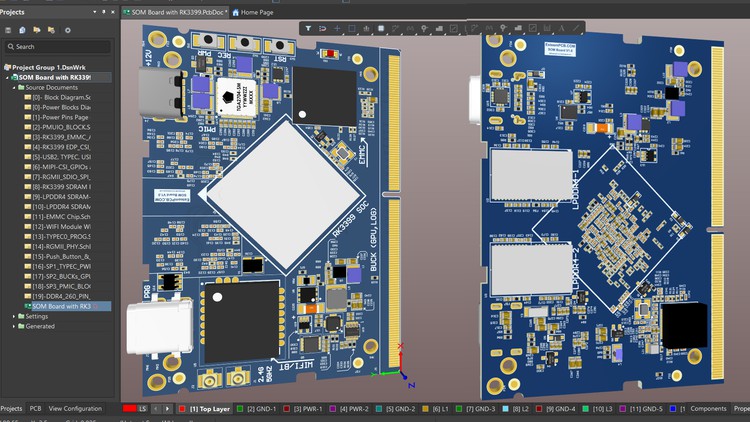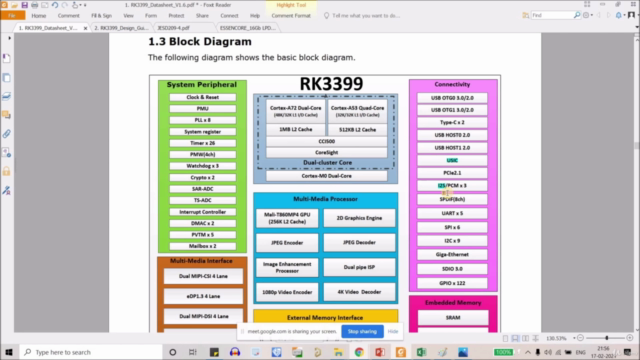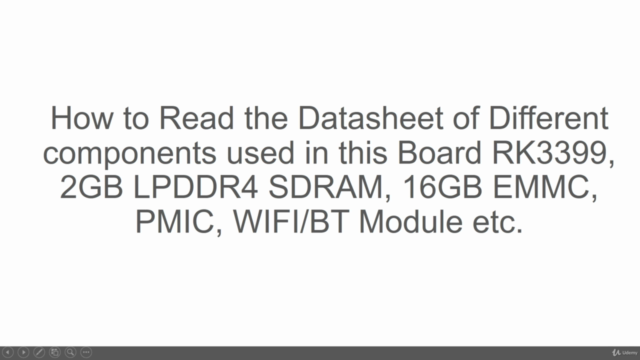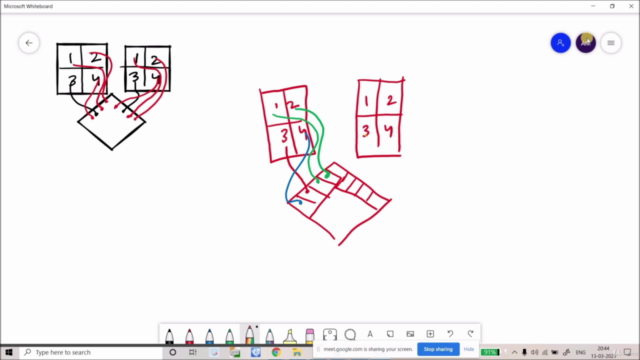High-Speed Board Design Course System On Module -EsteemPCB

Why take this course?
🎓 Advanced High-Speed Board Design Course for SOM (RK3399, LPDDR4 SDRAM, WIFI/BT Module, EMMC, PMIC, 260 Pin DDR4 System on Module) 🚀
Headline: Unlock the Secrets of High-Speed Board Design with our Comprehensive System on Module (SOM) Course! 🖥️💡
Course Description:
Hello, aspiring hardware designers and engineers! Dive into the world of advanced hardware design with our High-Speed Board Design Course for SOM (RK3399, LPDDR4 SDRAM, WIFI/BT Module, EMMC, PMIC, 260 Pin DDR4 System on Module). This course is meticulously crafted to guide you through the intricate process of designing a high-speed board from scratch.
📚 Course Structure: I have structured this course into #13 distinct sections, each filled with multiple lessons to ensure a comprehensive learning experience:
-
Requirement Sheet and Processor RK3399 Datasheet 📑
- Understand the detailed requirements and specifications of the RK3399 processor.
-
Choosing SDRAM (SDR/DDRX/LPDDRX) 🧠
- Learn how to select the right SDRAM type, understand its pin mapping, and design its schematic from the datasheet.
-
Selection and Schematic Design of PMIC 🔋
- Master the process of selecting and designing a Power Management IC (PMIC) for your board.
-
EMMC (Embedded Multimedia Card) Chip Selection 🗂️
- Discover how to select an EMMC chip, map its pins, and create its schematic design.
-
WIFI/BT Module Selection 📡
- Navigate the world of WIFI/BT modules, understand certifications, and design their schematics.
-
External LDO/DC-DC/Buck-Boost Selection ⚡
- Learn about different LDOs, DC-DC converters, and buck-boost regulators, and their schematic designs.
-
Schematic Design of RK3399 🔧
- Undertake the detailed schematic design for the RK3399 processor, including impedances planning on schematic through net-classes.
-
Layer Stack-up and Components Placement Planning 🎨
- Explore different layer stack-ups and execute your components placement plan effectively.
9-10. Components Placement Planning Execution 📐
- Dive into the detailed execution of components placement planning across two sections.
11-13. Layout Planning, Preliminary Layout, and Optimization 🛠️
- Learn high-speed design rules, length matching, power plane planning, and optimize your layout for superior performance.
Key Schematic Blocks: In this course, you will work with major schematic blocks including:
- Project Block Diagram
- Power Budget Block Diagram
- Power Supply Schematic for RK3399
- PMUIO Schematic Block of RK3399
- EMMC/PCIE/ADC Schematic for RK3399
- EDP/MIPI-DSI/HDMI Schematic for RK3399
- Type-C/USB3.0/USB2.0 Schematic
- Ferrite Bead, ESD Diodes, and Magnetic Application Selection
Additional Learning:
- Preplacement and Layout Planning using Microsoft-Paint
- Understanding Different Grounding Techniques (Signal Grounding, Earth Grounding, Chassis Grounding)
- Conducting Power Distribution Network (PDN) Analysis for PCBs
Why Take This Course? Upon completing this course, you will be fully equipped to design any "Processor Board" without the need for simulation models or third-party support. You'll have the practical skills and knowledge to tackle complex high-speed board designs with confidence. 🏆
Join us on this journey to master the art of high-speed PCB design for System on Modules (SOM). Enroll now and transform your career in hardware engineering! 🚀🖥️🎓
Course Gallery




Loading charts...
Comidoc Review
Our Verdict
Though High-Speed Board Design Course System On Module on Udemy contains some minor hiccups and requires improvement in presentation, its thorough exploration of SOM components using Altium Designer makes it a valuable resource for beginners seeking strong fundamentals in high-speed board design. However, brace yourself for the lengthy 24-hour course duration.
What We Liked
- Comprehensive coverage of high-speed board design, addressing all stages from component selection to layout optimization using Altium Designer.
- In-depth exploration of System on Module (SOM) components like RK3399, LPDDR4 SDRAM, EMMC, PMIC, and WIFI/BT modules.
- Dedicated lessons on understanding datasheets, design guidelines, and certification requirements to ensure a reliable design process.
- Real-world examples, instructor's extensive experience, and valuable insights into potential challenges in high-speed design projects.
Potential Drawbacks
- Minor inaccuracies in certain explanations, like associating DC hysteresis voltage with machine learning concepts instead of DDR memory DC levels.
- Disorganized presentation, abrupt topic transitions, and occasional repetition which affected smooth information absorption.
- Lack of complete examples for specific interfaces (e.g., PCI Express) within the course curriculum.
- Insufficient focus on budget planning in high-speed designs and underdeveloped topics related to specific RAM memory characteristics.